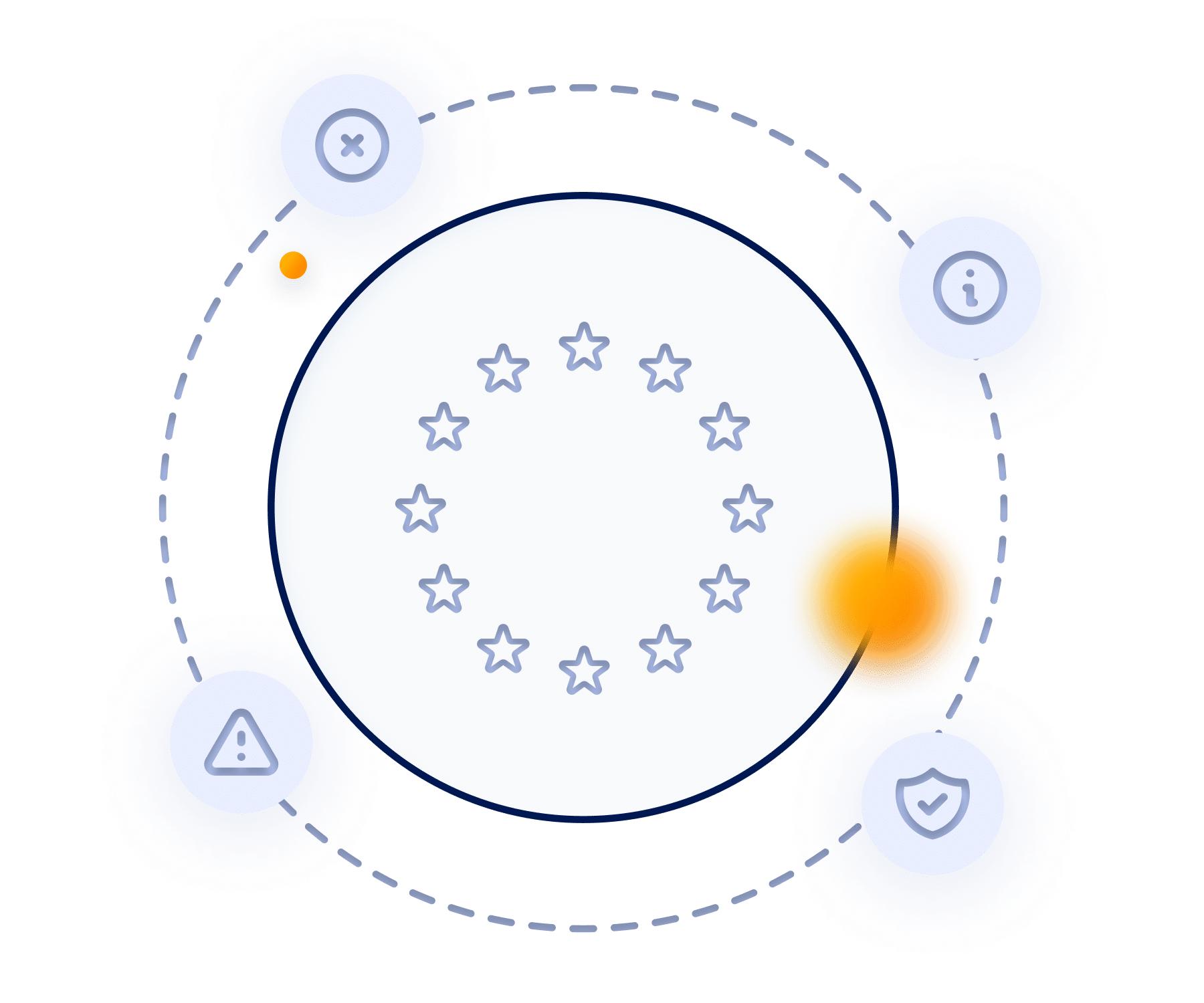Be EU AI Act Ready
with Our Regulatory
Conformity Assessments

What is the EU AI Act?
The EU AI Act is a regulatory framework governing the development, commercialisation, and use of artificial intelligence systems in the European Union. Its primary goal is to ensure that AI operates safely and ethically, balancing the protection of fundamental rights with the promotion of innovation.
The Act classifies AI systems by risk level, determining obligations accordingly. For example, high-risk applications, such as medical diagnostics or workplace performance monitoring, require providers to establish a risk management system. The enforcement of the Act will be handled by national regulators, which may vary across countries.
What Are the Four Risk Levels in the EU AI Act?
The EU AI Act categorises AI systems into four different risk levels, each with specific regulatory requirements.
1Unacceptable Risk
Unacceptable Risk
These systems are completely banned due to the high risks they present to public safety and citizens’ rights. They include applications such as subliminal manipulation intended to alter behavior, social scoring by public authorities, and remote biometric identification in real-time in public spaces, except in specific security situations.
2High-Risk AI Systems
High-Risk AI Systems
These systems are completely banned due to the high risks they present to public safety and citizens’ rights. They include applications such as subliminal manipulation intended to alter behavior, social scoring by public authorities, and remote biometric identification in real-time in public spaces, except in specific security situations.
3Limited-Risk AI Systems
Limited-Risk AI Systems
These systems are completely banned due to the high risks they present to public safety and citizens’ rights. They include applications such as subliminal manipulation intended to alter behavior, social scoring by public authorities, and remote biometric identification in real-time in public spaces, except in specific security situations.
4Minimal/ No-Risk AI Systems
Minimal/ No-Risk AI Systems
These systems are completely banned due to the high risks they present to public safety and citizens’ rights. They include applications such as subliminal manipulation intended to alter behavior, social scoring by public authorities, and remote biometric identification in real-time in public spaces, except in specific security situations.
What Are the Penalties for Non-Compliance?
The severity of the penalty depends on the type of infringement:
Prohibited AI Practices
Up to €35 million or 7% of global revenue
High-Risk AI Obligations
Up to €15 million or 3% of global revenue
False or misleading information
Up to €7.5 million or 1% of global revenue
What Is the Applicability of the EU AI Act?
The AI Act applies to AI systems with a connection to the EU, either through development, use, or market presence.
The Presence of an AI System
The Act defines an “AI System” as a machine-based system that can analyse inputs and generate outputs like predictions or decisions, with some adaptability or learning capability
Geographic Connection with the EU
The AI Act is a regulation of the EU, so its scope is inherently tied to the region. However, the Act also has extraterritorial reach (similar to the GDPR), meaning it can apply to entities and activities outside the EU if there is a significant connection to the EU.
The Act applies to any AI System that:
Is developed or used by an entity within the EU, Is placed on or made available on the EU market, Produces an output that is used within the EU, Or affects people within the EU.
How Can Zertia Help?
Conformity Assessment
A conformity assessment is like an AI compliance audit—ensuring your system meets the EU AI Act’s requirements. Zertia provides an independent, objective review, identifying any gaps so you’re fully prepared for compliance with confidence.
Future Notified Body Status
Zertia is committed to becoming a Notified Body under the EU AI Act and will apply as soon as the process opens. This will allow us to provide official certification for compliance with the EU AI Act, helping businesses demonstrate regulatory approval for their high-risk AI systems.

